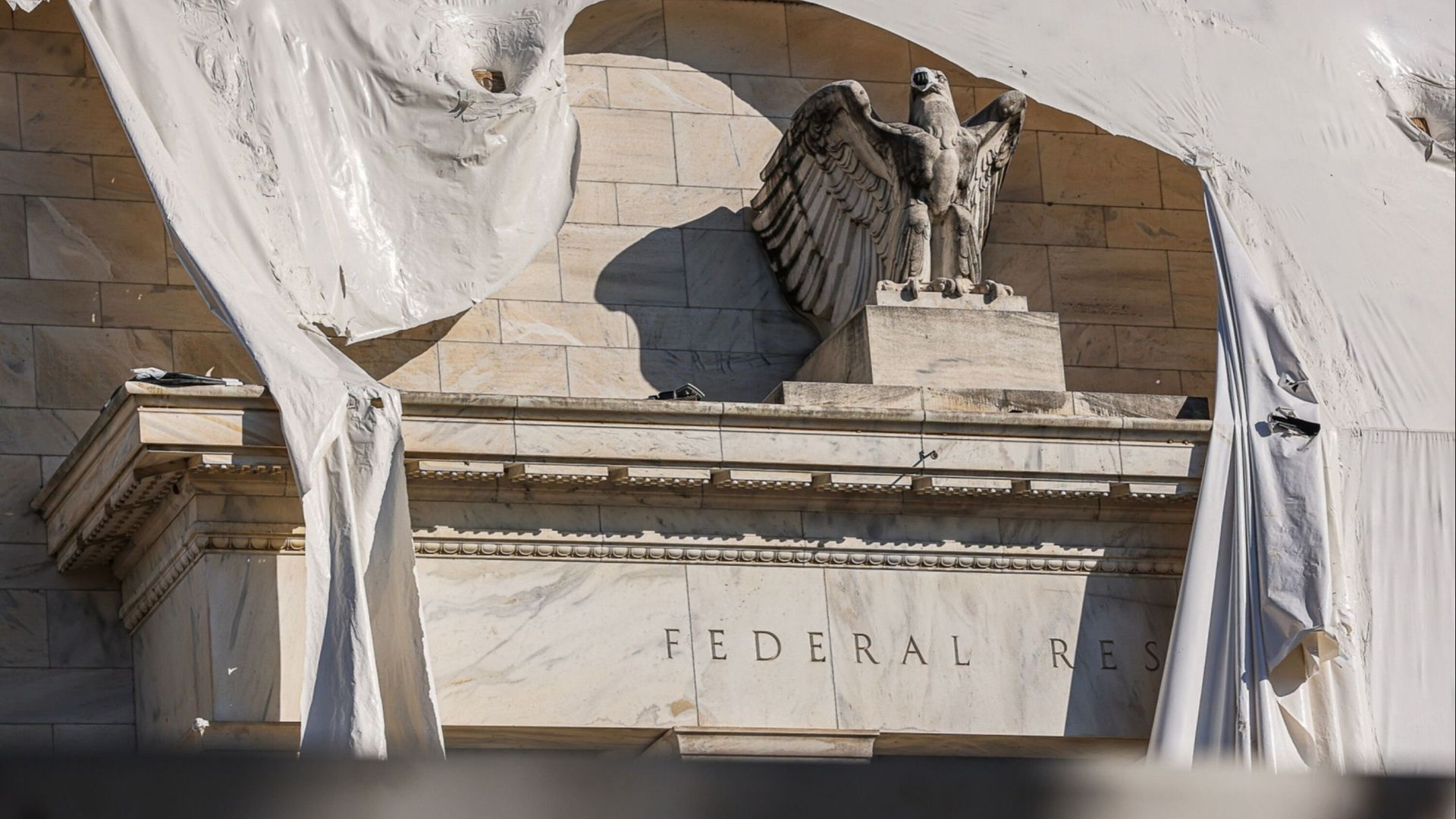尊敬的用户您好,这是来自FT中文网的温馨提示:如您对更多FT中文网的内容感兴趣,请在苹果应用商店或谷歌应用市场搜索“FT中文网”,下载FT中文网的官方应用。


The writer is global chief investment strategist at BlackRock
本文作者是贝莱德(BlackRock)全球首席投资策略师
The investing landscape has fundamentally changed. Some investors may be waiting, or hoping, for a return of the sustained bull markets in both equities and bonds that we enjoyed for the 40 years before the pandemic. But I think we are in a new regime, and we are not going back any time soon. It’s time to stop waiting and start making lemonade from the lemons that the macro environment presents. This is going to take a more nimble approach than it did in the past.
投资环境已经发生了根本性的变化。一些投资者可能正在等待或希望重现我们在疫情爆发前40年里所享受的股市和债市的持续牛市。但我认为我们正处于一个新的体制中,而且短期内不会倒退。是时候停止等待,开始从已经变成柠檬的宏观环境中榨取柠檬汁了。这将需要比过去更灵活的方法。
One reason: the economic outlook is much more uncertain. In the US, market narratives have been swinging between hopes for a soft landing and recession fears through 2023. But context is everything. Despite seemingly strong economic activity recently, the US economy has grown more slowly over the past three years than was typical before the pandemic. There is no landing — we are just climbing out of a hole.
原因之一:经济前景更加不确定。在美国,整个2023年市场一直在希望经济软着陆和担心经济衰退之间摇摆不定。但背景决定一切。尽管最近的经济活动看似强劲,但过去三年美国经济的增长速度比大流行病发生前要慢得多。没有什么着陆可言,我们只是从一个坑里爬出来。
There is a natural tendency to interpret inflation and growth as though we are in a typical business cycle but we are not. As the global economy normalises from the pandemic, it is being shaped by new forces such as ageing populations, geopolitical fragmentation and the low-carbon transition. We’re in the midst of a massive structural shift that is likely to see major economies move on to lower growth paths amid persistent production constraints. The resulting disconnect between the cyclical narrative and structural reality is stoking market volatility.
人们很自然地倾向于把通胀和经济增长解读为我们正处于一个典型的商业周期,但实际上并非如此。随着全球经济从疫情中恢复正常,它正在受到人口老龄化、地缘政治碎片化和低碳转型等新力量的影响。我们正处于大规模的结构性转变之中,主要经济体可能会在生产持续受限的情况下转向更低的增长路径。由此导致的周期性叙述与结构性现实之间的脱节,正在加剧市场波动。
While major central banks could start cutting interest rates from the middle of next year, they won’t be going all the way back down to pre-pandemic levels. The US Federal Reserve will have to hold back growth to align with constrained production capacity, especially in the face of looser fiscal policy. Higher rates are here to stay.
虽然主要央行可能从明年年中开始降息,但它们不会一直降到大流行前的水平。美联储将不得不抑制经济增长,以配合有限的生产力,尤其是在财政政策更加宽松的情况下。高利率将持续下去。
So, investors will have to learn once more how to outrun cash yielding around 5 per cent. Structurally higher policy rates should eventually mean higher returns on assets. But not all asset valuations have adjusted, in my view.
因此,投资者将不得不再次学习如何超越收益率在5%左右的现金。从结构性上讲,更高的政策利率最终应该意味着更高的资产回报率。但在我看来,并非所有资产估值都已调整。
As markets adjust in fits and starts to this new reality, we can expect to see greater dispersion of returns. For example. London Stock Exchange Group data shows that during the period of economic stability preceding the pandemic known as the Great Moderation, analyst views of expected company earnings were much more grouped together outside major shocks. Now they are more dispersed, showing that an environment of higher inflation and interest rates makes the outlook harder to read.
随着市场逐渐适应这一新的现实,我们可以预期收益会更加分散。举例来说。伦敦证券交易所集团的数据显示,在被称为“大稳健”的大流行病之前的经济稳定时期,分析师对公司预期收益的看法更多地集中在重大冲击之外。而现在则更加分散,这表明在通胀和利率上升的环境下,前景更加难以预测。
Seizing the opportunities from this trend requires being dynamic with portfolios, not relying on static exposure to broad asset classes that worked so well during the sustained bull markets of the past. In fact, our analysis suggests heightened volatility and greater dispersion of returns means that moving portfolios around more frequently in the new regime can be better rewarded than in the years leading up to the pandemic, while a set-and-forget approach worked better in the old regime.
要想从这一趋势中抓住机会,就需要对投资组合进行动态调整,而不是依赖于在过去持续牛市中表现良好的广泛资产类别的静态敞口。事实上,我们的分析表明,波动性加剧和回报更分散意味着,在新制度下,更频繁地调动投资组合比在大流行前的几年能获得更好的回报,而在旧体制下,“买后即忘”的方法效果更好。
That’s the theory. How am I putting it into practice? We’ve been changing our asset allocation more frequently. One example: we’ve shifted our tactical view on US Treasuries to capitalise on the current heightened rate volatility. We were underweight long-term Treasuries from late 2020 as we expected higher interest rates and a more positive “term premium” — the extra returns for investors for the risks of longer-dated debt.
理论就是这些。我如何把它付诸实践?我们一直在更频繁地改变资产配置。举个例子:我们已经改变了对美国国债的战术观点,以利用当前利率波动加剧的机会。我们从2020年末开始减持长期美国国债,因为我们预计利率将走高,“期限溢价”将更为积极——即投资者从长期债务的风险中获得的额外回报。
We turned upgraded to a neutral stance a couple of months ago as risks have become more two-directional. We then also turned overweight on European government bonds and UK gilts but have since trimmed that position given the drop in yields. This more dynamic approach stands in sharp contrast to the previous long-held underweight position in developed market long-term bonds.
几个月前,由于风险变得更加双向,我们将评级上调为中性。随后,我们也对欧洲政府债券和英国金边债券持增持态度,但鉴于收益率下降,我们又减持了这一头寸。这种更具活力的策略与之前长期持有的发达市场长期债券低配仓位形成了鲜明对比。
Within US equities, the macro assessment leads us to take a broad underweight position compared with portfolio benchmarks, but this is offset by the potential in artificial intelligence and technology stocks, taking us closer to a neutral stance.
在美国股票方面,与投资组合基准相比,宏观评估导致我们采取广泛的低配仓位,但这被人工智能和科技股的潜力所抵消,使我们更接近中性立场。
In addition to the tech sector more generally, we favour industrials, selective European banks and US healthcare in portfolio allocations. We upgraded Japan equities twice this year and continue to like them for 2024 but on a currency-unhedged basis. Within emerging markets, we favour India and Mexico as beneficiaries of companies diversifying supply chains and beneficial demographic trends.
我们的投资组合配置除了整体上更偏好科技股外,还看好工业股、部分欧洲银行股和美国医疗保健股。我们今年两次上调日本股票评级,并在2024年继续看好日本股票,但基于非对冲货币基础。在新兴市场中,我们看好印度和墨西哥,因为它们受益于企业供应链多元化和有利的人口趋势。
We are in a new regime — and not going back any time soon. This is a world in which rewards are up for grabs for investors that can navigate the structural shift to higher interest rates, more volatility and greater dispersion.
我们正处于一个新的体制中——而且不会在短期内倒退。在这个世界上,如果投资者能够驾驭向更高利率、更大波动性和更大分散性的结构性转变,就能获得回报。